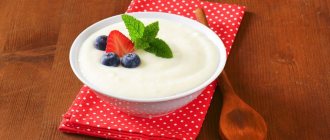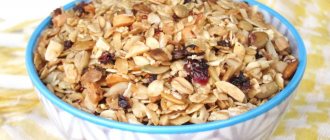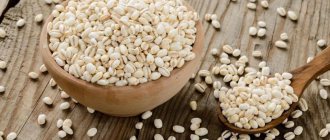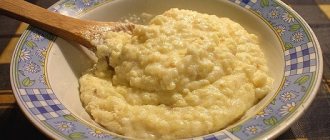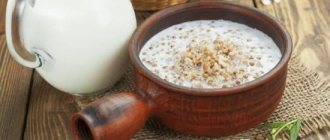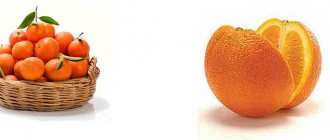Just 30–40 years ago, no one thought that semolina porridge could bring not only benefits, but also harm to the body. It was very popular as it was quick to prepare and perfectly satisfied hunger. It is also widely used in other dishes: cakes and pies, puddings and cutlets.
Children loved semolina porridge with milk with the addition of jam, berries and sugar. This turned an ordinary dish into a sweet dessert. And young mothers fed their infants with it. The news about possible health problems forced many people to reconsider their attitude towards it and called into question the statement about the benefits of semolina for the body.
What is semolina made from?
Content:
- What is semolina made from?
- The nutritional value
- Semolina porridge: what is it good for and who is it suitable for?
- Who is semolina porridge suitable for?
- Possible harm and contraindications
- How to choose the right cereal
- Secrets of cooking porridge without lumps
- Guryevskaya porridge
Of course, semolina is not the biblical manna from heaven, as some sometimes “authoritatively” claim. This porridge did not “fall on the head” of humanity, but, as historians suggest, it was first prepared from wheat grains by the inhabitants of the Middle East [1].
Yes, it is wheat that serves as the raw material for semolina. In other words, semolina porridge is the same flour, but coarser. According to technology, a grain of semolina sand is approximately a quarter of a millimeter. Coarser grains are 3/4 millimeter grains.
But, in addition to the diameter, the type of semolina is also influenced by the quality of the wheat used. Hard grains produce porridge labeled “T”, softer grains produce “M”, but the wheat mixture will eventually turn into white porridge labeled “MT” [2]. By the way, “T” brand semolina makes better sweet dishes; it can also be added to different types of minced meat. The “M” brand product is usually used for puddings, porridges and casseroles.
What is semolina obtained from?
The raw material for preparing semolina is soft or durum wheat. The grain enters the elevator belts of the flour mill. In the laboratory, the material undergoes a special test for the content of harmful substances and gluten. After sorting, the cereal is freed from the shell, the wheat kernels are turned into coarse and fine flour.
The core particles of the grains, which contain the most nutrients and vitamins, are subjected to final processing. Porridge prepared from this ingredient has a “stretchy” consistency and non-crumbly texture.
The nutritional value
Almost 70% of the total composition of semolina is starch [3]. In addition to it, the cereal contains vitamins B, E, PP, and iron. Although in fairness it should be said that this porridge is not a leader in the amount of minerals and vitamins.

Nutritional value of 100 g of semolina [4]:
- calorie content – 333 kcal;
- proteins – 10.3 g;
- fats – 1 g;
- carbohydrates – 70.6 g;
- fiber – 3.6 g;
- water – 14 g;
- vitamin E – 1.5 mg;
- vitamin PP – 3 mg;
- B vitamins – 1.3 mg;
- calcium – 20 mg;
- potassium – 130 mg;
- magnesium – 18 mg;
- phosphorus – 85 mg;
- sulfur – 75 mg;
- chlorine – 21 mg;
- iron – 1 mg;
- zinc – 0.6 mg.
In addition, the chemical composition of the porridge includes fluorine, chromium and molybdenum. And B vitamins are represented by folic acid, thiamine, riboflavin and pyridoxine.
Why is a dry product higher in calories than a prepared dish?
Why are there so many more calories in dry cereals than in the finished product, because it’s usually the other way around? Is there really an error in the calorie table for ready-made meals?
The thing is that semolina boils very much and swells during the cooking process. Therefore, for a whole saucepan of water or milk, only a few tablespoons of cereal are required, and not glasses, as is the case with buckwheat, millet or other cereals.
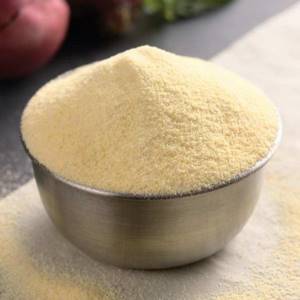
And from 100 g of dry product you get more than 300 g of finished porridge. If we take into account the minimum amount of cereal that goes into preparing a serving of morning porridge, then semolina can confidently be called a dietary product.
Semolina porridge: what is it good for and who is it suitable for?
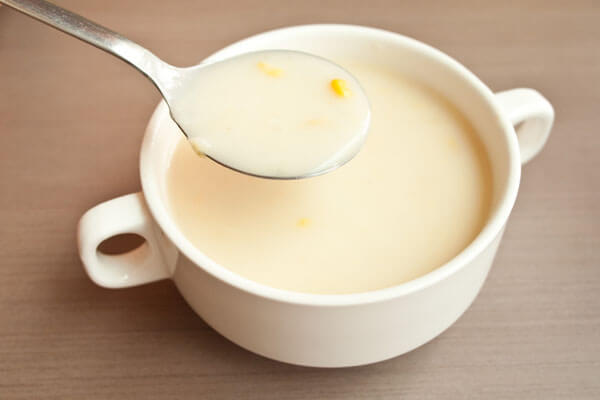
Researchers have been arguing about the beneficial properties of semolina for several years now. Some talk about the exceptional benefits of the product, others argue that semolina is not a necessary food for healthy people. But in order to understand whether semolina is more harmful or beneficial, it is important to analyze how it affects the organs and systems of the body.
The special consistency and chemical composition of semolina means that when it enters the body, it accelerates the healing of damage. This applies to microcracks in the intestines, as well as small ulcers in the stomach. The enveloping effect of porridge is useful for gastritis. Researchers have determined that this product can soothe pain, relieve spasms and inflammation of the digestive system. But only semolina cooked in water, without sugar or salt, gives this effect. In addition, semolina helps remove waste and toxins from the body [5].
It is known that potassium, which is part of semolina, improves kidney function. People whose medical records include a diagnosis of “renal failure” should pay attention to semolina. This product is on the list of permitted products for them [6].
The high energy value of semolina makes it an excellent choice for people experiencing loss of strength and weakness. This high-calorie porridge gives you energy to fight fatigue.
The results of some studies suggest that semolina is beneficial for older people. There is an assumption that this cereal prevents the occurrence of cancer, reduces the risk of heart attack and stroke, and also prevents the onset of symptoms of dementia.
Among other beneficial properties of semolina, the following is noted [5]:
- strengthening the immune system;
- improving the functioning of the nervous system;
- activation of brain activity;
- improved blood circulation;
- increasing physical performance;
- strengthening bones and teeth.

So, having understood the beneficial properties of semolina, we can summarize who this product is suitable for:
- patients with diseases of the gastrointestinal tract;
- persons with kidney pathologies;
- patients suffering from heart disease;
- people with disorders of the nervous system;
- those whose profession requires increased workload;
- persons with anemia.
Due to the presence of folic acid, which is necessary for the healthy development of the fetus, and other important vitamins and minerals, this product is recommended to be included in the diet of pregnant women.
Dry
Porridge is prepared from semolina, which is nothing more than finely ground wheat. The diameter of the grains ranges from 0.25 to 0.75 mm. The cereal quickly boils, again, thanks to grinding, and is perfectly absorbed by the body. Due to its minimal fiber content, liquid semolina porridge is recommended to be included in the diet in the presence of diseases of the gastrointestinal tract. This is one of the first beneficial properties of cereals. In addition, semolina fills the body with energy, helps restore physical strength, and also cleanses and removes fat.
Despite the lack of fiber, the composition of the cereal is quite diverse. It contains starch, proteins, vitamins E and group B, as well as many minerals. It also contains gluten, known as gluten. Gluten is viewed controversially by most scientists because it leads to thinning of the intestinal mucosa and interferes with the absorption of nutrients. In addition, it is “gluten” that often causes allergies. Another very controversial substance in cereals is phytin. It has the ability to bind calcium salts, preventing its absorption. And yet, such moments do not negate the benefits and excellent taste of porridge. For a long time, semolina has been popular all over the world.
Semolina is used relatively infrequently as a product for weight loss, which is due to its high calorie content compared to other cereals - 333 kcal for every 100 grams. However, you should know that after cooking, cereal loses a significant part of its calories, so it becomes quite appropriate on the dietary table.
Since no one eats semolina in dry form, it is a mistake to consider it a high-calorie product.
The main thing to achieve the effect and benefit is to follow a number of simple rules when choosing a product:
- Choose cereal in a plastic bag, since such packaging prevents it from coming into contact with moisture.
- Give preference to porridge that has the “GOST” mark on its packaging.
- Purchase only clean goods, without suspicious impurities.
After purchasing, the cereal must be transferred to a glass container and sealed tightly. In this case, its shelf life can be extended to 10 months.
Possible harm and contraindications
During the Soviet era, semolina porridge became an indispensable dish in all kindergartens and schools. One day, nutritionists noticed: children who are underweight on semolina recover quite quickly. So they fed all the children porridge, which was cooked in a matter of seconds, but cost a penny. But today nutritionists say that this was a mistake, because semolina can also be dangerous.

Proponents of this theory believe that this dish is not suitable for the daily diet of healthy children, since it is a very high-calorie food. Cereals consist of so-called fast carbohydrates with a high glycemic index [7]. This means that after a semolina meal, glucose levels in the bloodstream rapidly increase, but also quickly decrease, causing sharp spikes in sugar.
The second danger of semolina is phytin. This is an organic salt that makes it difficult for calcium to be absorbed. Consequently, if you feed babies semolina day after day, you can eventually lead a healthy child to obesity or rickets [7]. In addition, due to calcium deficiency, the heart and other organs suffer.
Semolina (especially those flavored with sugar, butter, cream or full-fat milk) is not the best choice for diabetics. High caloric intake can cause hyperglycemia. Because of the calories, it is not advisable for overweight people to indulge in this cereal.
Another danger from frequent consumption of semolina is constipation, since it contains virtually no fiber.
This product is also contraindicated in persons with a gluten allergy (celiac disease) [5]. It is precisely because of the high gluten content in semolina porridge that nutritionists advise not to feed it to children under three years of age. And older children should not be given semolina more than 2-3 times a week [7].
Dishes
Semolina porridge is not only a complete food product that can be supplemented with fruits, vegetables, etc., but also an ingredient for creating quite unexpected dishes. The delicate taste of the finished porridge can diversify your daily and dietary diet.
Baked
The classic recipe for making semolina involves boiling, but baked porridge turns out much more appetizing. The calorie content of the finished product is not low - about 339 kcal per 100 g, but it satisfies quickly and for a long time.
To prepare a volume suitable for 6 servings, take 2 cups of regular oatmeal without additives. In a bowl, combine with a glass of low-fat yogurt, again without additives. Mix well and add 1 cup of semolina. After 30 minutes, add one raw chicken egg and 100 g of steamed raisins. Add half a cup of granulated sugar. Mix thoroughly. The baking dish is greased with vegetable oil. Place the mass in it and cook at a temperature of 180 degrees for 40 minutes.
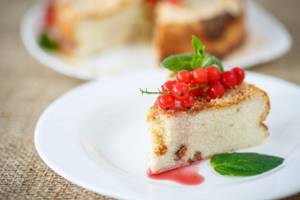
With banana
Semolina with banana is ideal for breakfast. The sweet fruit gives the porridge an unexpected taste without adding much calories - 116 kcal per 100 g. The dish is prepared using milk, which makes it nutritious and tender.
Pour a glass of cold milk into the pan and add 2 tablespoons of semolina. Bring to a boil over low heat and cook for another 3 minutes with constant stirring. Place a tablespoon of granulated sugar and a finely chopped sprig of rosemary on a hot frying pan. Banana cut into slices is also sent there. To prevent the banana from losing its shape, frying is done quickly. Semolina is poured into a plate, and a fragrant caramel banana is placed on top.
The dish not only saturates the body with vitamins and minerals, but consuming it in the morning will prevent problems with the cardiovascular system and improve the digestion process. This is all thanks to the potassium content in bananas.
With dried apricots and raisins
A diet based on semolina porridge gives excellent results, but not everyone can use it regularly, and even in its classic form. The recipe with dried apricots and raisins is just for those. With a relatively low calorie content - 154 kcal per 100 g - and nutritional value, the dish provides gastronomic pleasure. By the way, this is one of the recipes for which “milk water” is used.
In a saucepan, combine a glass of water and low-fat milk. Add 2 tablespoons of granulated sugar and 1 teaspoon of salt. Place on fire, stir and heat, but do not bring to a boil. Remove from heat. 70 g of large raisins and 100 g of dried apricots are thoroughly washed and soaked for 20 minutes in warm water, then squeezed and crushed. The milky liquid is returned to the fire and heated. Add 1 cup of semolina and stir quickly to prevent the formation of lumps. Without ceasing to stir, add dried apricots and raisins. Stir until the semolina completely thickens. Remove from heat, cover with a lid and leave to steep for 15 minutes.
The dried fruits used in the recipe give the finished product a special taste and help increase its benefits for the body. Firstly, it becomes possible to increase the level of hemoglobin in the blood and have a positive effect on the functioning of the heart muscle. Secondly, prevent disorders in the functioning of the nervous system and improve sleep.
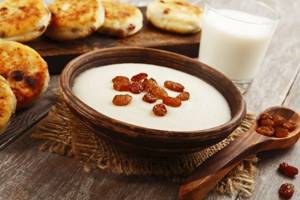
With carrots
Semolina is equally good in combination with fruits and vegetables. Adding carrots is a great way to fortify a dish. The vegetable is recommended for bronchitis, anemia, and vision diseases. In addition, it is an antiseptic, choleretic, analgesic and anti-inflammatory natural remedy that additionally strengthens hair and normalizes complexion. 100 g of semolina with carrots contains only 119 kcal, so it is suitable for use when losing weight.
Place a small piece of butter in a saucepan. Wait for it to heat up and add a little sugar. Grate the carrots on a fine grater and place in a saucepan. Simmer for about 5 minutes with constant stirring. A glass of warm milk is added to the carrots. After a few minutes, gradually add 2 tablespoons of semolina. Stir and cook for 4 minutes.
Chocolate
Cocoa powder will help transform a dish from a tasteless white mass into a gastronomic pleasure. Additionally, the recipe includes raspberries, due to which the semolina is saturated with even more vitamins. The dish looks especially useful for people with low immunity and impaired metabolism. Cocoa also has benefits, as it contains a large amount of antioxidants.
Pour 2 cups of milk into a saucepan. Heat, add 2 tablespoons of sugar and a pinch of salt. Pour 3 tablespoons of cereal into well-warm, but not boiling milk. Cook, stirring constantly, for 5 minutes. Add 2 tablespoons of cocoa powder and cook for another 1 minute. Once cooking is complete, add a handful of fresh or frozen raspberries.
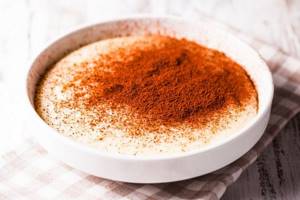
Dessert
If you have ready-made milk semolina left in the refrigerator, you can use it to prepare an unusual dessert, the calorie content of which is 149 kcal per 100 g. For those losing weight, the dish looks like a good alternative to high-calorie baked goods.
Heat 500 g of semolina, add 20 g of butter and let it dissolve, then mix. Take a deep plate and moisten it with a small amount of water. Place a tablespoon of cherry jam on the bottom, then cover with half a portion of semolina. Then again there is a layer of jam, but this time from 2 tablespoons. Spread the remaining porridge on top. Cover the plate with foil and put it in the refrigerator for 2 hours. After the time has passed, the foil is removed and the plate is turned over onto a plate. Sprinkle the dessert with a few teaspoons of cocoa powder.
How to choose the right cereal

The taste and consistency of the finished semolina depend not least on the quality of the raw cereal. Today semolina is not in short supply, as in tsarist times, and you can buy it even in the smallest store. Dozens of manufacturers offer their “most delicious” semolina, although not all of them are so. Here are some tips on how to choose the right semolina.
Today, this cereal is usually presented in two forms: packaged in the manufacturer’s branded packaging and by weight. The latter is more prone to dampness. The consequence of improper storage is a bitter or sour taste in the finished porridge. Sometimes this product may smell musty and damp. Hence the advice: when buying semolina by weight, it would be useful to smell it.
A serious danger of porridge is bugs, flies, moths and other insects that can be carriers of diseases. And having brought such uninvited guests into the house, in the future you will have to tinker for a long time to get rid of them. And porridge with “living creatures”, of course, is no longer suitable for food.
Sealed packaging minimizes the risk of mold, mildew or insects. Therefore, before purchasing, you must carefully check the integrity of the package with porridge.
For children's health
The composition of the porridge, rich in vitamins, acids, essential elements, dietary fiber and minerals, makes the food very healthy for children. Flavorful food increases appetite, promotes weight gain, and helps children suffering from dystrophy or who are underweight.

Proteins in combination with starch strengthen teeth and accelerate bone formation. The presence of phytinase in the product protects the child’s body from viruses and strengthens the immune system. It is recommended to start eating porridge no earlier than the first year of life in order to avoid possible digestive disorders.
Until the age of 3, such food should be introduced into the diet in dosed amounts - no more than 50 g, no more than 2 times a week. Increasing portions is possible according to the recommendations of the pediatrician. The health benefits of a growing organism depend on how correctly parents introduce the product into their children's diet.
Secrets of cooking porridge without lumps
Many people adore semolina porridge, but not everyone is delighted with the cooking process. More precisely, not so much from the cooking, but from the not always successful result, since the finished porridge often clumps into lumps and burns. But if you know a few secrets of the classic preparation of semolina, then cooking it will become much more enjoyable.
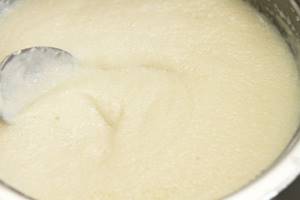
So, the first thing is maintaining proportions. To make the porridge of medium thickness, you need to take 500 ml of milk and 4 tablespoons (tablespoons, of course, and preferably with a slide) of cereal. If you are preparing sweet semolina, in addition to the main ingredients you will need one tablespoon of sugar. A more dietary option is with salt.
To make the porridge a uniform consistency, you will first have to boil the milk. And only after boiling you need to pour the cereal into it very slowly. It is important to constantly stir the mixture. You need to bring the porridge to a boil, then turn the heat to low, add sugar or salt, a little butter and stir again. In a word, the main secret of semolina porridge with a creamy consistency and without lumps is constant stirring. However, there is nothing complicated about this, because until the semolina is completely ready, it will take no more than three minutes from the moment the cereal is poured into the milk. The finished dish must be removed from the heat, covered with a lid and allowed to “rest” for a minute or two.
Some tips:
- If you replace milk with cream, you get a very delicate creamy porridge.
- The calorie content of the dish will be lower if the milk is diluted with water or replaced with it completely (however, in this case the porridge will lose its taste).
- Liquid semolina for small children will turn out correct if the portion of cereal is halved.
- The finished semolina can be “improved” with slices of fruit, berries, dried fruits, cinnamon or chopped chocolate.
- You can add airiness to the finished porridge by adding butter and whisking the mixture.
With milk
Semolina cooked with milk turns out nutritious and tender. It contains simple carbohydrates that give you quick satiety and a burst of energy. It is absorbed almost completely, without injuring the stomach. All thanks to the lack of fiber - there is no more than 2% of it in the product.

Despite the large amount of simple carbohydrates, the dish can be used for weight loss. Experts have even developed several special diets, one of which involves consuming exclusively milk semolina.
The calorie content of semolina porridge with milk is only 98 kcal, which is not much higher than that cooked in water. You can increase your calorie content with additional ingredients:
- with sugar but without butter – 101 kcal per 100 g;
- with butter, without sugar – 155 kcal per 100 g;
- with butter and sugar – 113 kcal per 100 g.
It should be borne in mind that when losing weight, you should not use the fattest milk and try not to overload the porridge with butter, adding a small piece when serving.
There is another interesting option for preparing semolina for those who are not ready to give up milk - cooking with milk and water (in a dairy farm). Liquid components are taken equally. The calorie content of such a dish is at the level of 80 kcal per 100 g. If you add a little sugar additionally, the calorie content will increase to 107 kcal for every 100 g.
The process of preparing semolina in milk is similar to the method of boiling in water, that is, the cereal can be poured into cold or boiling liquid. Intensive stirring is necessary.
Guryevskaya porridge
There is another version of semolina porridge, which compares favorably with the usual semolina from the school canteen. This is a nice Guryev porridge. Its recipe appeared at the beginning of the 19th century, when semolina was only a delicacy for the bourgeoisie. So, the then financial minister of the State Council, Count Guryev, once visited his comrade Major Yurisovsky. The latter, knowing about his friend’s passion for delicious food, ordered Zakhar Kuzmin, his serf cook, to prepare something like that in order to surprise the count. And the cook prepared semolina porridge with nuts, dried fruits and creamy foam for dessert. They say that after the meal, the count bought the serf for an amount unimaginable at that time and made him his personal cook, and the porridge has since been called Guryev’s [8].
Features of use for certain diseases
Semolina (health benefits and harms are certainly taken into account by the attending physician) is used as a supporting agent on an individual basis, taking into account the specific disease:
- Patients suffering from type II diabetes require a strict diet, which is the main method of treatment. The high GI of semolina porridge limits or completely eliminates its use;
- for gastritis, especially during exacerbation, it is recommended to take semolina porridge. Food that envelops the walls of the stomach reduces pain, helps cleanse the gastrointestinal tract, and heal inflamed areas. You should eat food in small portions without including salt and sugar. It is allowed to add a small amount of milk;
- for pancreatitis, semolina can provide the patient with very effective help. The cereal does not burden the pancreas; the delicate consistency of the porridge does not irritate the stomach and does not cause bloating. Food should be cooked in filtered water; during remission, you can add jam, butter, and berries.
- for rotavirus (stomach flu), which manifests itself in severe pain, diarrhea and vomiting, semolina porridge will become a food that is as gentle as possible for the digestive organs. Such food has beneficial effects in case of poisoning. Porridge transports pathogenic flora from the intestines and stomach faster, which will speed up the healing process;
- for constipation, diarrhea or colitis, a product with a high fiber content is required. The absence of the required amount of dietary fiber in semolina porridge makes the dish an undesirable food option for colitis with constipation. For the same disease, aggravated by diarrhea, the use of the dish is strongly recommended.
Recipes for facial care
The unique properties of semolina are successfully used in cosmetology to restore, soften, whiten, moisturize and nourish the skin.
Cream
An excellent product with a rejuvenating effect.
- Boil 3 tbsp in milk. l. semolina, strain the mixture through 3 layers of gauze. Add 1 tsp. shea butter, 2 drops of rose oil, mix the composition.
- Apply a thin layer of the product to your face before going to bed. Can be used as a massage product.
Store the cream unopened for no more than a week.
Anti-wrinkle mask
A simple and affordable way to care for your face at home.
- Combine 1 tbsp in a bowl. l. semolina, liquid natural honey, yogurt (without additives). Mix the ingredients, leave the cereal to swell until a viscous consistency is formed;
- Apply the composition to the pre-steamed dermis, hold for 15–25 minutes, then wash with warm water. Lubricate the skin with moisturizer.

Arrange treatments every 3-4 days for 6-8 weeks.
Firming mask
The resulting composition, when used regularly, has an effective tightening result.
- Combine 25 g of semolina with 2-3 tbsp. l. cream or sour cream, mix thoroughly, let stand until the cereal swells.
- Apply the mixture with light massage movements onto the skin of the face and décolleté. Leave for 15–20 minutes. You should not keep the mask on for longer so as not to cause skin irritation;
- Rinse off the composition alternately with warm and cool water, then use an emollient cream.
Repeat sessions 1-2 times a week. Eating semolina can bring both undoubted benefits and cause some harm to human health. A balance of interests is possible provided that this truly unique cereal product is used wisely.
The history of the origin of semolina
The history of the origin of semolina began around the 13th century. When grinding already processed grain into flour, a certain amount of large particles are formed that are unsuitable for baking bread. European flour millers learned to sift them from the bulk and use them in cooking. The porridge prepared from such raw materials turned out to be tender, nutritious and tasty, and it immediately gained popularity.
At first, semolina was very expensive, because when grinding the grain, a negligible amount of it was formed. Only wealthy people could afford to enjoy semolina porridge. In Rus', semolina was also expensive because the grain from which it was extracted was quite rare due to low yields. Cereals became widespread after the 16th century, thanks to the emergence of many small bakeries, taverns and the popularization of baked goods made from “white” flour.
Interesting!
There are several theories about the origin of the word “semolina”. The most common version is the biblical one. The cereal, which provides nutritious, white and tender porridge, is compared to “manna from heaven” - white edible grains that God sent to the peoples wandering in the desert.
Is it possible to use semolina for weight loss?
This issue causes constant debate among experts. The opinions of nutritionists are sometimes mutually exclusive - some believe that eating semolina dishes contributes to gaining extra pounds, others are confident of positive results. People who choose a mono-diet as a means of losing weight should stick to the program for up to 5 days.

The benefits of this method of short-term nutrition are possible by adding berries and fruits, vegetables and dietary meat to the menu. A low-carbohydrate diet excludes the consumption of wheat cereals. In any case, the use of such a product for weight loss depends on the characteristics of the body, the recommendations of the attending physician and nutritionist.
More on the same topic:
2 comments
- Julia writes, I recommend this casserole recipe to anyone watching their weight. Finely grated pumpkin up to approximately 500 grams squirrels - 5 pcs. semolina 100 grams beat egg whites with a mixer, add semolina and pumpkin, mix again with a mixer and in the oven for 40 minutes.
- PtichkaPevichka90 Writes,
This means without sugar and salt... We should calculate the calorie content of this casserole. It’s just not clear what the role of proteins is in it?
